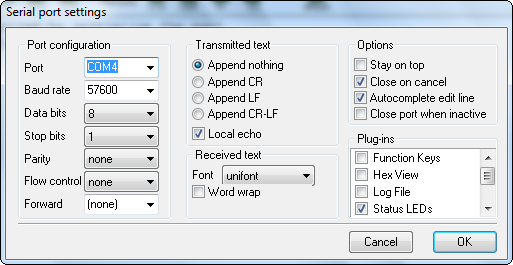

See the video below for a visual.We will begin by installing the program that will get you started on RTTY. The Icom 7300 N1MM Logger should be displaying the radio frequency at the top of the window next to the icon. Go back and verify the above settings and make sure your com ports are correct. If you do, something is not setup correctly.
Click OK to close the Configurer window. Mine is DTR (pin 4)=CW, RTS (pin 7)=Always Off, Radio Nr=1, PTT Delay (msec)=30, Dig Wnd Nr=1, Allow ext interrupts and Winkey go UNchecked, Two Radio Protocol=None and Footswitch (pin 6)=None. Next to that check Digi and also check CW/Other. The next row under Port, choose the COM port your USB cable is connected to. Footswitch (pin 6)=None and Radio Polling Rate=Normal. 

Mine is 9600, N, 8, 1, DTR (Pin4)=CW, RTS (pin 7)=PTT, Icom Code (hex)=94, Radio Nr=1, PTT Delay=30 and PTT via Radio Command SSB Mode is checked.
Make sure your Com port is setup correctly. On the Hardware tab select the port that your CI-V cable is on and next to it choose the IC-7300 for the Radio. Click on Config, then select Configure Ports, Mode Control, Audio, Other…. Step four, if you don’t already have it, download and install N1MM Logger+. It’s free and you can find it here. I have included a couple of extra settings that will help later on when using PSK31, RTTY (FSK) and CW keying. Set the following menu items under MENU>SET>Connectors. These are the changes, leave everything else to default settings. Step three, turn your radio on and setup the Icom 7300 using the radio’s menu. Do not connect the USB cable until you have downloaded and installed the driver. Step one, if you haven’t already, download and install the USB driver from Icom for your Icom IC-7300. If you just want to use a USB Cable with HRD and operate some PSK31 or RTTY (AFSK), take a look at this video. I have found this to be the easiest, because later on I added cw keying and RTTY (FSK) to the mix. Use the CI-V for rig control and the USB for the soundcard. One is the USB cable connected to the radios USB port and the other is a CI-V cable connected to the radios CI-V port.







 0 kommentar(er)
0 kommentar(er)
